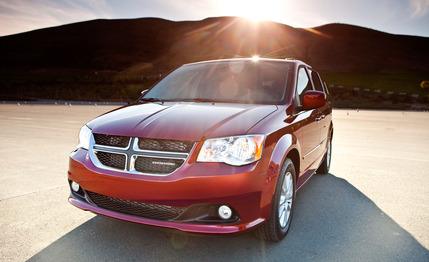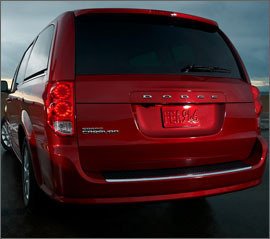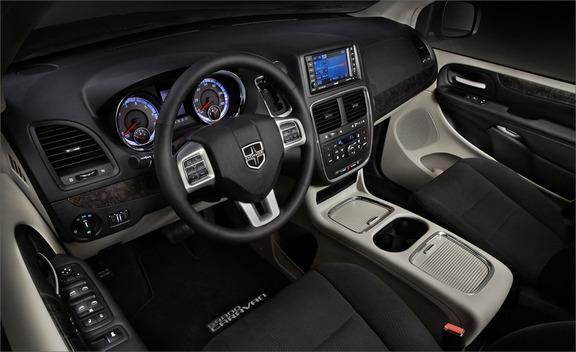
 First Drive Review
First Drive Review
By now you probably know that the Dodge and Chrysler product lines have been thoroughly overhauled for 2011. Nearly every model receives at least a face lift and considerable chassis revisions, and the Chrysler 300, the Dodge Charger, and the Dodge Durango get bumper-to-bumper redesigns.
As Chrysler considers itself the creator of the modern minivan, the company spent some time on the 2011 Dodge Grand Caravan and Chrysler Town & Country models as well. Behind new grilles, the smooth and gutsy 3.6-liter Pentastar V-6 is now standard across the board (the old vans had three V-6 engine options, none of which was as powerful as the Pentastar). But much of the minivan refresh budget went where buyers would notice it most: to massively improved interiors with upgraded materials. Chrysler also took some of the overlap out of the respective model lineups, aiming the Dodge at the under-30 (thousand dollars) crowd and steering the bigger spenders toward the Chrysler, which starts at about $31,000 and rises from there.


Driving the Bus
Since driving minivans is seldom an adrenaline-inducing experience—at least not in a good way—we entered the 2011 Grand Caravan with meager expectations. Not surprisingly, with 4500 pounds to lug around, the Pentastar keeps busy, especially during passing, when the transmission jogs through its six ratios. But for a minivan, the Grand Caravan feels competitively quick, and there’s no thrashiness in the powertrain. The rorty growl of the V-6 is a genuine surprise.
So is the amount of road feel transmitted through the steering wheel. Chrysler says it left nothing alone under the skin of its minivans, and it shows. The responsiveness of the Dodge’s chassis is impressive (for a minivan), although the level of road noise is a bit high. Incidentally, the Town & Country we also drove wasn’t as loud inside—maybe sound deadening accounts for a bit of that price differential.
We also took some time to appreciate the Grand Caravan’s thoroughly refreshed interior that features a new soft-touch dash and a sporty, tunneled gauge cluster. Given how much cheap plastic swathed the interior of the previous model, we seriously didn’t believe that the Grand Caravan’s interior could ever be made acceptable, let alone appealing.
A Fight Breaks Out
But appealing it is, and not a moment too soon. Every other major player in the minivan marketplace—the Honda Odyssey, the Toyota Sienna, and the just-revealed Nissan Quest—has suddenly received a complete redesign. Although those three Japanese minivans have more, um, adventurous styling than the American mainstays, the continued success of the Chrysler/Dodge twins suggests that perhaps the minivan market isn’t the place to explore styling concepts.


Prices start at $25,830 for the base Grand Caravan Express, which includes keyless entry, Stow ’n Go second-row captain’s chairs, and a multifunction steering wheel. For a grand more, the Mainstreet trim level has body-color exterior trim and power rear windows. The most comfortable trim level—at this point, anyway—is the Crew, which starts at $29,530 and comes with three-zone automatic climate control, power sliding doors, a power driver’s seat and adjustable pedals, an infotainment system with a 30-gig hard drive, and a lot more. But the most interesting model has yet to be introduced: the Grand Caravan R/T. The so-called man van will debut early next year and will be equipped much like the Crew but with a number of visual tweaks such as a body-color grille; polished aluminum 17-inch wheels; a nine-speaker, 506-watt sound system; and a so-called performance suspension—all for $31,430. Stay tuned for a road test of the R/T as soon as it’s available.